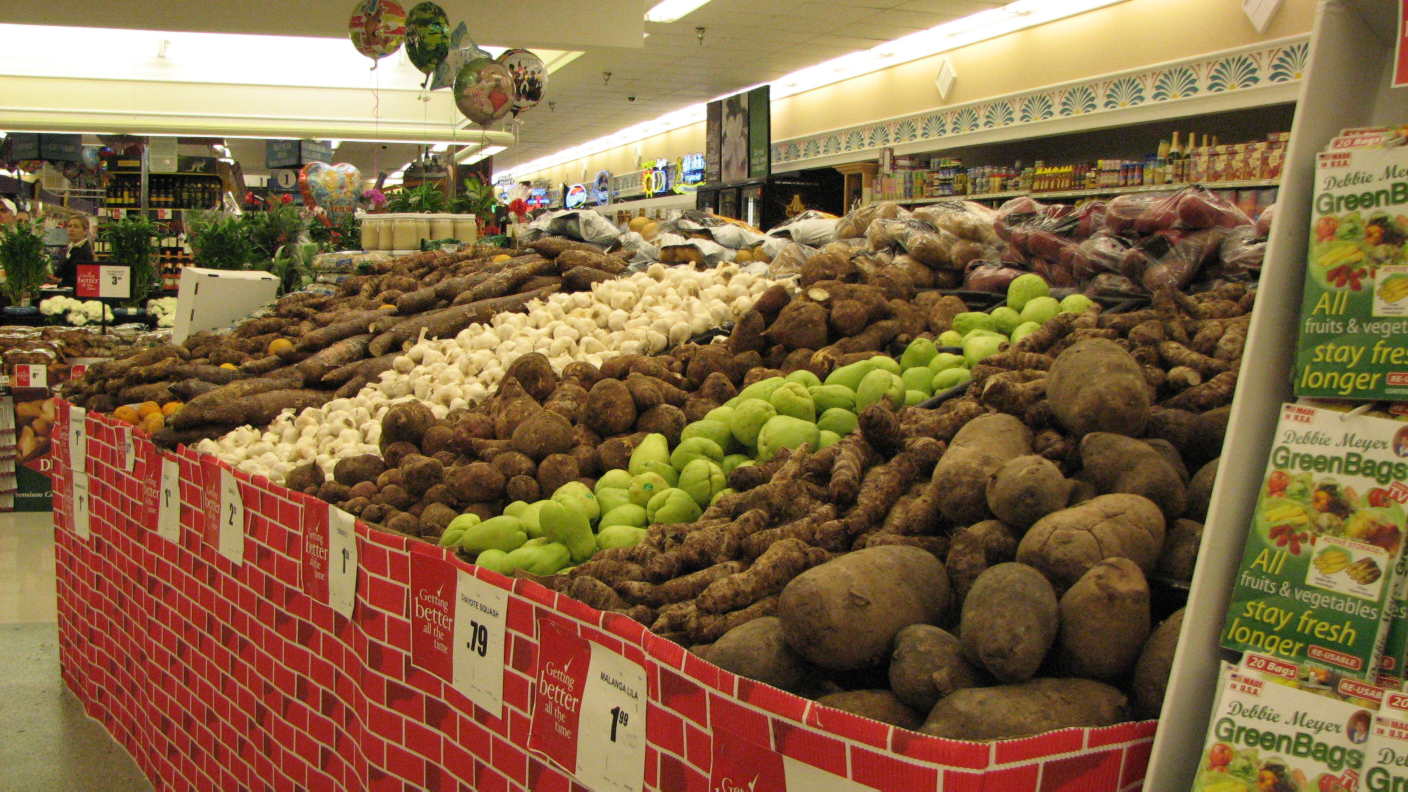Roots
Malanga is probably the most hypoallergenic food in the world, so even persons with extensive allergies should not have problems with the flour manufactured from this vegetable. The starch grains are the smallest and most easily digested of all complex carbohydrates. Malanga is closely related to the taro root, which is used to make poi, a cooked paste, common in Polynesian countries. Malanga and taro root are in the Arum family, Araceae. Malanga is also called yautia, cocoyam, eddo, coco, tannia, sato-imo, and Japanese potatoes. The various species of malanga or yautia, include some of the oldest root crops in the world. It was first cultivated in tropical America, and spread to Africa in the mid 1800s, and is also grown in the Philippines. They are especially popular in Cuba (malanga) and Puerto Rico (yautia) and are found in this Winn Dixie supermarket that caters well to the large Hispanic population in Miami.
Malanga are about the size and shape of a regular white potato; they look a little like an overgrown gladiola bulb, because the outside skin of the malanga is dark brown and somewhat hairy. There are about 1530 calories in one pound of malanga flour. The composition of malanga flour is approximately: 75.5% carbohydrates, 5.1% protein, 1.6% fat, 9.8% fiber, 1.2% water, and 6.8% minerals. In this photo, they are to the right of the green chayote squash, and also at the other end of the container.


No comments:
Post a Comment